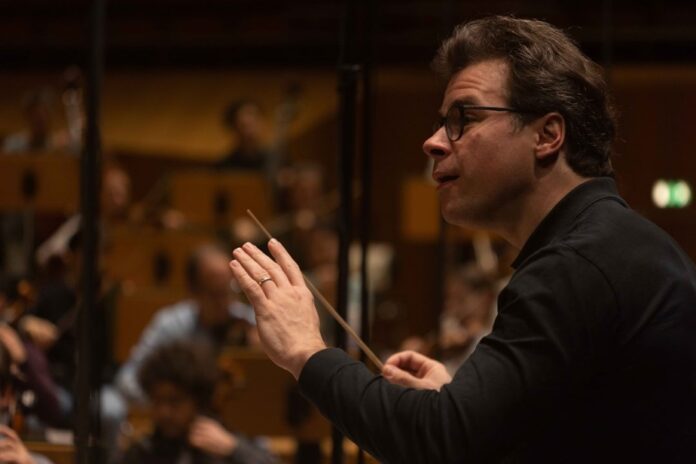Four masterpieces of the last German romanticism transfigured by the direction of Jakub Hrůša.
At 41, the Czech Jakub Hrůša (pronounced “Roucha”) has not finished talking about him. A pupil of Jiří Běholávek in Prague, he will become musical director of the Royal Opera House in London in 2025. In the meantime, he continues his fruitful association with the Bamberg Symphony Orchestra, which began in 2016.
Bamberg, a Bavarian town as populous as Drummondville, has a renowned orchestra, formed at the end of the Second World War by German musicians who had fled Czechoslovakia. Its first leader was the great Wagnerian Joseph Keilberth, followed by none other than Eugen Jochum and – briefly before his early death – István Kertész.
After several award-winning records, the orchestra released Liebestod on Accentus, a moving Wagner-Mahler-Strauss program recorded last summer. The title (“Death of Love”) is illustrated by a sublime abstract composition by the painter Dieter Ladewig.
For the leader, death is not only a tragic moment, but also “which gives meaning to our lives”. It is for this reason that the disc ends with Death and Transfiguration by Richard Strauss, whose conductor patiently searches the darkness until the final, appeased light.
But it is Wagner’s Prelude and Liebestod that open the program, in an inhabited slowness where the quivering of the strings mingles with the inexorable waves that rise from the depths of the orchestra.
Between the two, Totenfeier (which would later become the first movement of Symphony No. 2) and the Adagietto from Mahler’s Symphony No. 5.
The first is a great journey into inexorable darkness where Hrůša guides us with a sure hand. The second, an immense caress, a love poem whispered by the magnificent strings of Bamberg. The conductor takes a minute longer than Rafael Payare on his last record, and that makes all the difference in giving the music time to breathe.
A great disc.















